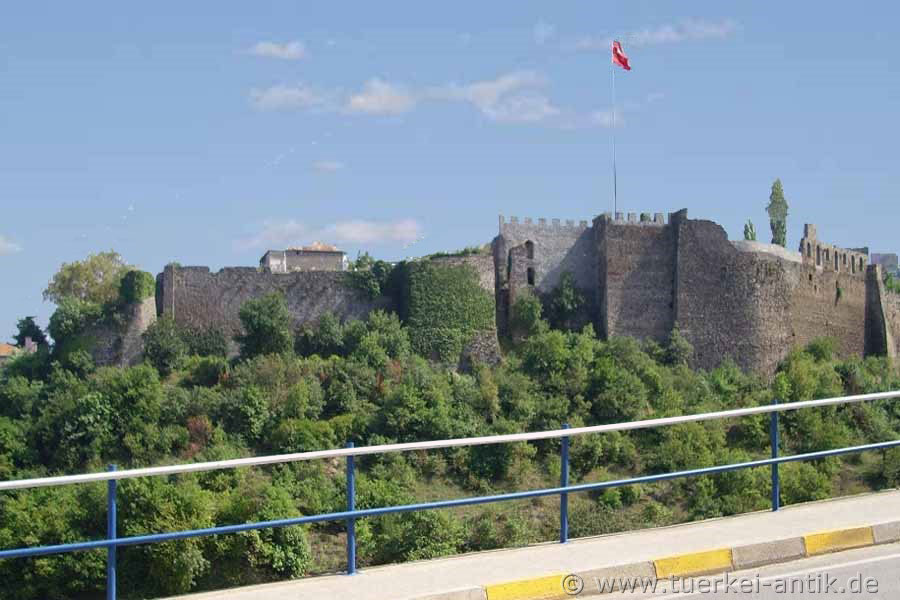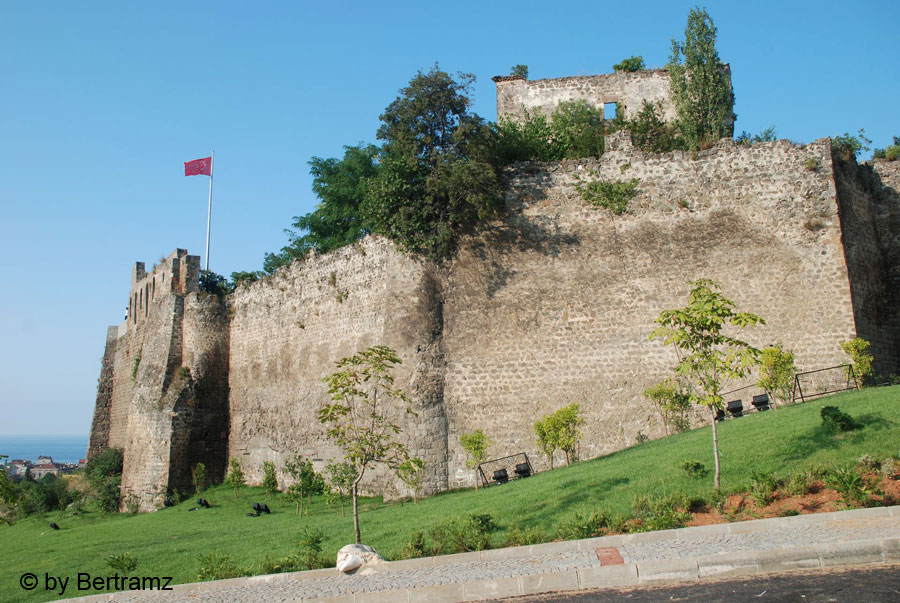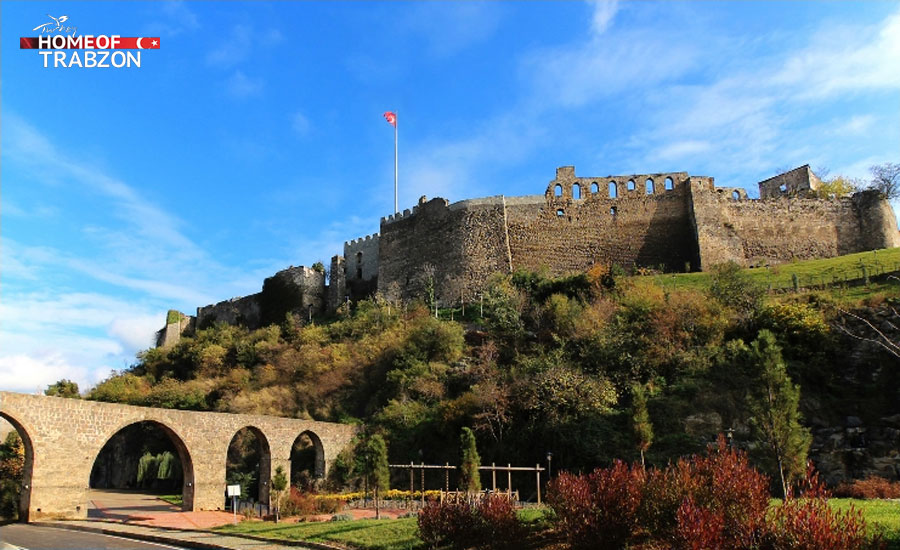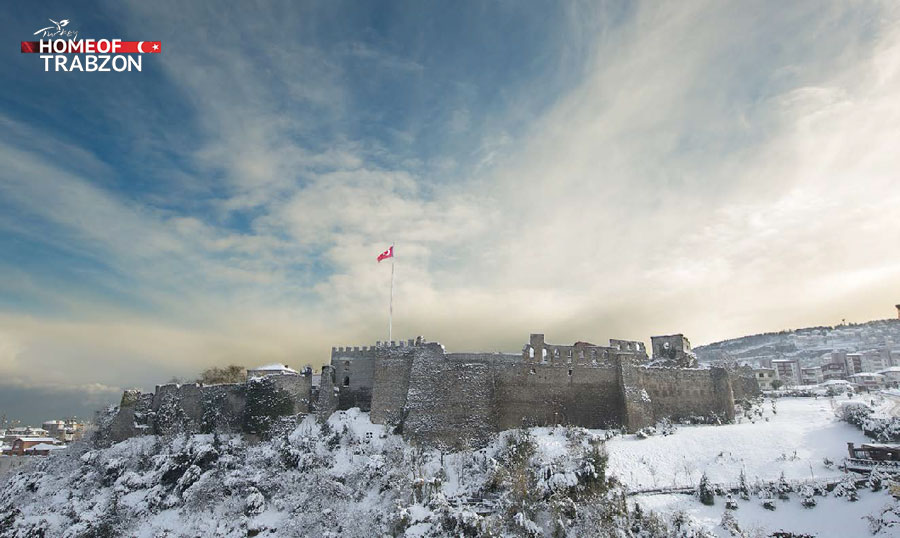 |
| Trabzon Kalesi | |||
 |
|
||
| Trabzon Kalesi | |||
|
The Latin name of the town is Trapezunt(um). Founded around the 7th century B.C. by Greek settlers, the Roman emperor Hadrian had an artificial harbour built at the beginning of the 2nd century and the town expanded. The trading station on the Silk Road, which was busy in the Middle Ages and until the First World War, belonged to the Trapezeunt Empire from 1204 to 1461. Almost all historically important buildings were built during this time. |
|||
|
|
|||
|
The entire fortification is divided into three parts, ascending from the coast inland along a narrow ridge of hills, called the "lower fortress" (Aşaği Hisar), "middle fortress" (Orta Hisar) and "upper fortress" (Kule Hisar, or "inner fortress", Iç Kale). Recent finds suggest that the first settlement of the hill took place in the 2nd millennium BC. The oldest part of today's city wall dates back to the Roman period of the 4th century. However, they did not function as a castle, but as the city wall of the Acropolis. In a few places, the older enclosure wall of the Roman Acropolis from the end of the 1st or 2nd century A.D. can still be seen. At that time, large, carefully carved stones were stacked on top of each other without mortar. |
|||
|
|
|||
|
The upper fortress was destroyed during a civil war in the 17th century. The western part of the newly built fortress wall, built under Alexios II (reigned 1297-1330), was preserved. It rises on the edge of the rock above a deeply incised transverse valley. According to an inscription, it was completed in 1324. At the site of the upper castle (citadel) today a modern residential area with multi-storey new buildings stretches far up the slope. The preserved structures of the citadel date back to the time of the empire Trapezunt. |
|||
|
|
|||
| Photos: @chim, Bertramz, Home of Trabzon | |||
| Translation aid: www.DeepL.com/Translator | |||
| Source: Wikipedia and others | |||
|
|
|||




